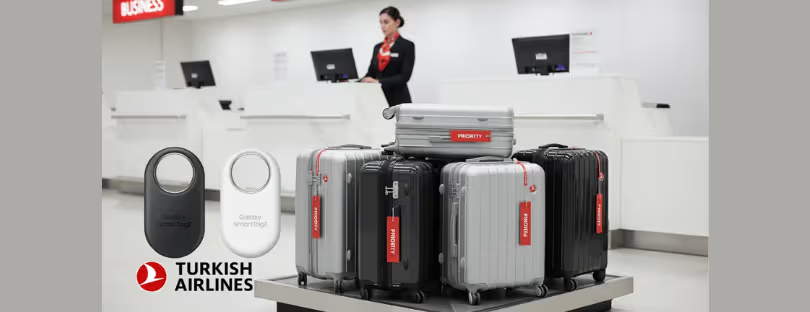
Why Europe’s Train Apps Are More Powerful Than Airline Apps — and No One Notices
Let’s be honest — when was the last time you opened your airline’s app and thought, Wow, this is intuitive and actually helpful? Probably never. Now compare that to using Trainline, SNCF Connect, or even Deutsche Bahn’s DB Navigator. They might not be flashy, but they’re surprisingly smart, efficient, and quietly evolving into the unsung heroes of European travel tech. European train apps
While airlines are busy squabbling over ChatGPT integrations and trying to figure out how to make their booking flows 0.3 seconds faster, European rail companies have been building something much bigger — a truly connected, multimodal, AI-driven experience that actually works. And no one seems to be talking about it.
The Quiet Revolution of Train Apps
Train apps in Europe have come a long way. What started as glorified timetables are now full-blown mobility platforms. Trainline, for example, doesn’t just show you trains. It aggregates rail, bus, metro, and even flights (ironically). It predicts seat availability, gives you fare insights, and can rebook you faster than most airlines even process a delay.
Then there’s SNCF Connect, which integrates real-time data from regional and national trains, city metros, trams, car rentals, and e-scooters — all in one app. It’s not just a booking tool anymore; it’s a digital mobility assistant.
These apps are solving problems that airline tech hasn’t even acknowledged:
- Need to know how to get from a village in Provence to a small town in the Alps via train and local bus?
- Want to compare that to a BlaBlaCar or bike-share ride?
- Trying to figure out if you can still catch your connection because your TGV is 12 minutes late?
Rail apps have answers. Airline apps, in contrast, still ask you to “please arrive three hours early” — just in case.
Meanwhile, in Airline App Land…
What are airline apps doing in 2025? Mostly still stuck in 2015.
Some airlines have made progress. Lufthansa’s app is decent. KLM adds a chatbot that cracks jokes. Ryanair’s is better than it used to be (low bar, to be fair). But most of them still act like one-trick ponies: book a flight, check in, maybe buy a seat, maybe add a bag. Then pray nothing goes wrong.
They’re siloed. They rarely connect to other modes of transport. Multimodal? Forget it. Predictive features? Minimal. Real-time problem-solving? Usually ends with “please call customer service.”
Even worse, airlines seem more focused on experimenting with AI chatbots than fixing the fundamentals. “Try our new GPT-powered travel assistant!” they boast — only to have it misquote baggage fees and suggest connections that don’t exist. Flashy, but flimsy.
Train Apps Are Solving Real Problems
Here’s the difference: train apps are grounded in utility. They’re solving the everyday frustrations of travel across complex ecosystems.
Take Trainline’s Price Prediction. It uses historical data to tell you when ticket prices might rise or fall — a godsend for budget travelers. Or SNCF’s delay forecasting, which uses AI to estimate if your train will arrive late before it even leaves the station.
Or check out Austria’s ÖBB app — it doesn’t just let you book trains. You can plan a trip from a Vienna apartment to a mountain hut in Tyrol, including metro, long-distance train, bus, and walking — all ticketed and tracked in one place.
No need to bounce between five apps. No need to check Google Maps to “fill in the gaps.” Train apps fill those gaps for you.
Why Airlines Aren’t Catching Up
So why aren’t airlines keeping pace? A few reasons.
1. Fragmentation. Airlines work globally, across dozens of countries, systems, and regulations. It’s harder to build a unified digital experience. Trains, especially in Europe, operate mostly within national or EU frameworks, which are becoming increasingly integrated.
2. Legacy Systems. Airlines are often shackled to outdated GDS systems. Trying to innovate within that framework is like putting Spotify on a floppy disk.
3. Priorities. Airlines tend to prioritize revenue over UX. Want to check in? Click through 4 upsells. Want to see your ticket? Dig through ads for hotels, rental cars, and overpriced transfers.
4. Crisis Mode. Post-COVID, airlines are in a constant loop of catching up — with schedules, with staff shortages, with surging demand. Tech innovation is often reactive, not proactive.
Meanwhile, European train companies have had the quiet luxury of consistency. They’ve doubled down on digital strategy — and it shows.
Multimodal: The Secret Superpower
Let’s talk about multimodality, because this is where train apps are absolutely crushing it.
Multimodal travel — combining trains, buses, bikes, metros, maybe even a short flight — is the future of sustainable, flexible mobility. And train apps are already there.
SNCF Connect and Trainline can:
- Suggest full door-to-door journeys
- Sync with city mobility services (think Paris Metro, Lyon’s Velo’v, Marseille’s RTM buses)
- Integrate carbon footprint comparisons
- Let you rebook or reroute instantly when delays hit
This level of interoperability is rare in airline apps — which still mostly stop at “we got you from Airport A to Airport B… good luck with the rest.”
Train apps are positioning themselves not just as booking tools, but as mobility platforms. Think Uber meets Expedia meets Google Maps — but local, sustainable, and smarter.
The Hidden Battle for Digital Travel
So, is there a digital travel war happening? Absolutely. But it’s not flashy. It’s not about who builds the first AI assistant with a face. It’s about who quietly builds tech that solves real mobility problems.
Right now, train apps are winning that war — not by marketing loudly, but by working better.
The irony? Most travelers don’t even realize it. They still expect train tech to be clunky and local, while assuming airline tech is world-class. The opposite is increasingly true. European train apps
What This Means for the Future of Travel
As Europe pushes for greener, more connected transport — especially under the EU Green Deal and cross-border digital rail initiatives — train apps are only going to grow more central to how we travel.
Expect:
- More cross-border integrations (France + Italy, Germany + Czechia, etc.)
- More real-time personalization
- Dynamic rerouting and smart delay handling
- Voice AI that actually knows your travel style
And airlines? They’ll need to wake up. Because travelers are starting to notice that, actually, it’s easier to go from Berlin to Bordeaux by train and get real-time updates, refunds, and rebookings — than to book a simple connection on an airline app.
Final Thought about European train apps
Airline apps had their chance to become digital travel leaders — but they got stuck selling seat upgrades and playing catch-up with tech trends. Meanwhile, European train apps quietly built a new standard for mobility: smarter, cleaner, more connected.
And unless the airlines catch on soon, they’ll be stuck in the clouds — while the real digital revolution keeps rolling on rails.
Got a favorite train app feature that saved your trip? Or had a nightmare airline app moment? Let’s hear it. The quiet tech war is here — and you’re already a part of it.










